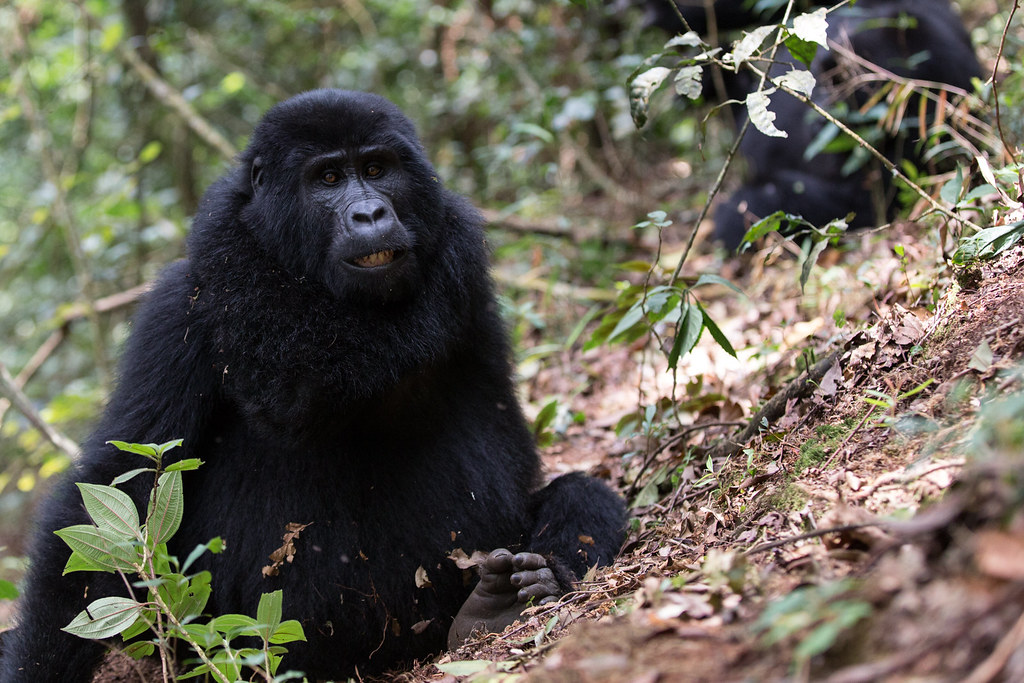Environments of Mountain Gorillas – Ecology and Challenges
Mountain gorilla adaptations for survival — How do Gorillas adapt to their environment — Why are mountain gorillas endangered — Behavioral adaptations of Gorillas — Mountain gorillas habitat — Gorillas adaptations in the tropical rainforest — Physiological adaptations of gorillas — Structural adaptations of gorillas
Mountain gorillas roam the lush subtropical and tropical rainforests of East and Central Africa, particularly in Rwanda, Congo, and Uganda.
Gorillas are fascinating creatures, closely related to humans, alongside Bonobos and chimpanzees, sharing an impressive 98% of our DNA.
Mountain gorillas are a rare and captivating species of primates, with fewer than 1000 individuals remaining in their natural habitat.
The primary dangers facing mountain gorillas include the loss of their natural habitats and poaching, driven by human activities for a range of motivations.
Mountain Gorilla Environment
The powerful silverbacks lead the group through their daily escapades and protect them from any threats that may arise.
Female mountain gorillas reach sexual maturity earlier than males, typically between the ages of 8 and 12 years.
Their birth rate is quite limited, with only 1-2 fertile days each month, and a female typically brings forth around 4-6 offspring throughout her life.
The gestation period for gorillas lasts between 8 to 9 months.
Exploring the Habitats of Mountain Gorillas
The majestic mountain gorillas inhabit the breathtaking volcanic slopes of the Virunga massif ranges, found in Volcanoes National Park in Rwanda, Virunga National Park in Congo, and Bwindi and Mgahinga National Parks in Uganda.
They thrive at heights between 8,000 and 13,000 feet.
Mountain gorillas boast a luxurious coat of thick and long fur, setting them apart from other great apes. This remarkable adaptation enables them to thrive in chilly environments where temperatures can plunge to freezing levels.
Mountain gorillas thrive on a diverse diet of shoots, bark, leaves, fruits, stems, and pith that they discover on the slopes of their volcanic home.
Mountain gorillas thrive best in their wild environments, where they can roam freely through tropical forests, rainforests, and dense woodlands. Rainforests are composed of distinct layers: the emergent layer, the canopy layer, the understory layer, and the forest floor layer.
Mountain gorillas inhabit the forest floor of rainforests, where every layer contributes to the survival of its residents.
The habitat of mountain gorillas faces significant challenges from human settlement, mining activities, deforestation, bush burning, land clearing for industrial purposes, and agricultural expansion.
As humans encroach upon the habitat of mountain gorillas, these magnificent creatures are compelled to ascend to higher, colder elevations. This shift exposes them to harsh conditions, making them vulnerable to diseases such as pneumonia.
Gorillas create their nests each day on the forest floor, skillfully using tree branches and leaves. Young baby gorillas cozy up in a nest with their mothers until they reach the age of 4, at which point they can start sleeping in their own nests, yet still remain close to their mothers.
They occasionally share nests, particularly when the rains come, and are capable of building nests for daytime rest.
Exploring the World of Gorillas in Their Untamed Environment
Embarking on a journey to see gorillas is possible in the breathtaking landscapes of Bwindi and Mgahinga National Parks in Uganda, Volcanoes National Park in Rwanda, and Virunga National Park in Congo.
To ensure a seamless experience on your gorilla trekking adventure, it is essential to secure your permits three months ahead of your planned trekking day. This way, you can avoid any letdowns from the unavailability of permits upon your arrival in the country where you intend to trek the majestic gorillas.
The cost of gorilla permits differs based on the country you choose for your gorilla trekking experience.
Rwanda has a fee of $1500 per person, Uganda charges $800 per person, and the Democratic Republic of Congo has a cost of $400 per person.
Every national park that offers gorilla trekking shares a similar climate, making the optimal times for a visit from June to September and December to February.

